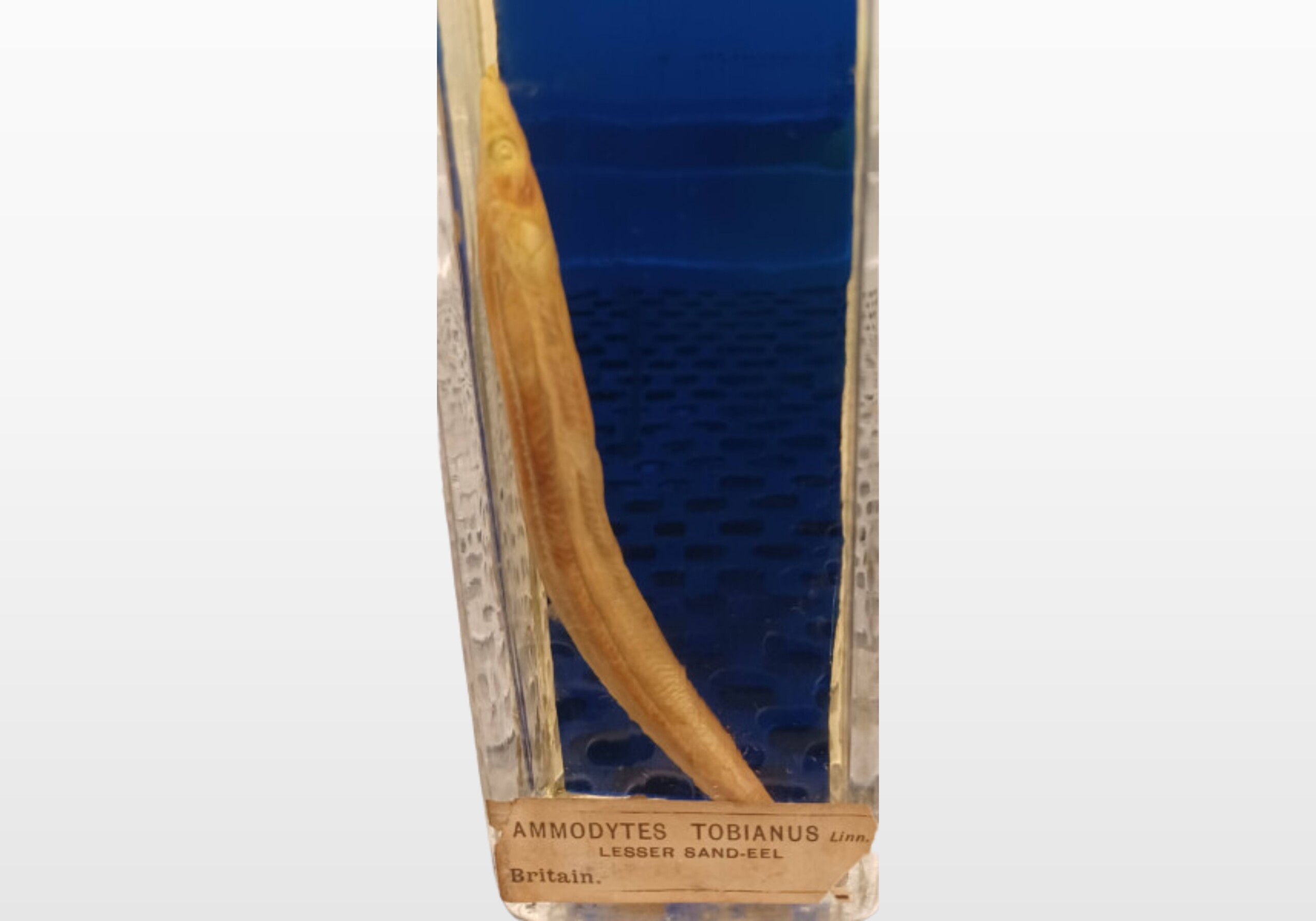
in English original
This object has been translated into 5 different languages by 5 different users
Sand eels are a very important food source in UK seas. They are a major part of the diet for seabirds like puffins, larger fish like mackerel, and even mammals like the harbour porpoise. Sand eels swim in large shoals between April and September, and spend the autumn and winter months buried under the sand, only coming out to spawn.
Due to changing ocean temperatures, scientists are concerned about how their numbers may decline. The timing in a year of the babies hatching is very specific to allow them to feed, and other species are so dependent on sand eels that if this is put out of sync there will be much wider consequences.
Is there anything that you’ve noticed starting to happen at a different time of the year than it used to, such as when you see butterflies, or when flowers bloom?
Do you have something you’d like to say, in your own language or English, about the object or translation? We’d like to hear what you think.
Translations are community-sourced and for anyone to participate in, however you use your language. For more information, see Community Guidelines.
24 Nov, 2023
I grew up near a large lake in Umbria, Italy (Lago Trasimeno, or Lake Trasimene in English) and eels were part of our diet. Quite a large part, actually. I know it might gross out some of you, but we used to eat pasta with small eels (“ceriole” in our dialect), cut into pieces and cooked in a tomato sauce, and for our New Year’s Eve dinner (“il cenone di San Silvestro”) we always had “capitone”, a very big eel which quite frankly looked like a large snake! It was nevertheless delicious, cut into large chunks, seasoned with bay leaves and spit-roasted. Nowadays the only eels I get to eat are the jellied variety. I recommend Margate and Herne Bay for the best jellied eels in the world! Have you ever eaten eels?